
NOW Articles Written By Members
An Argument for Collecting Half Dollars
Late Night and a Russian Type Set
Old Country Coins: Newfoundland’s Rarest 5-Cent
Milwaukee Medals: Fifth Ward Constable
A look back at a common, but classic commemorative – Wisconsin’s Territorial Centennial
A side-tracked story: Mardi Gras Doubloons
A look back at a collecting specialty – the O.P.A. ration tokens of WWII
Bullion And Coin Tax Exemption – Act Now!
Is There A Twenty Cent Piece We Can Add To A Collection
Capped Bust Half Dollars: A Numismatic Legacy
U.S. Innovation Dollars: Our Most Under-Collected Coin?
My 2023 ANA Summer Seminar Adventure
>> More articles in the Archive
For more NOW Articles Written By Members,
A Sextet Of Scientists From Wisconsin
by Tom Casper #982
The Wisconsin Academy of Sciences, Arts and Letters began in 1870 and was founded in Madison, Wisconsin where they remain today. Their goal is to bring people together in the fields of sciences, arts and letters to make life better for the people of Wisconsin. They unite scientists, humanities scholars and artists to stimulate learning and exchange of research. It remains after 151 years as an independent, nonprofit organization, separate from state government and the university system.
It was in 1920 when the Academy celebrated their semi-centennial. To commemorate that occasion, they had a plaquette or medal struck. A beautiful art medal was struck by the Medallic Art Company (MACO). The obverse depicts Minerva, a Roman goddess, tending a Lamp of Knowledge. In her left hand she is holding a shield with a serpent on it. At the bottom is the Latin phrase NATURAE SPECIES RATIOQUE which translates to Nature's Species and Reason. The reverse shows the busts of six renowned Wisconsin scientists; Lapham, Chamberlin, Peckham, Irving, Hoy, and Allen. Below them it reads THE WISCONSIN ACADEMY OF SCIENCES, ARTS, AND LETTERS 1870-1920. At the bottom right are the sculptor's initials LC.
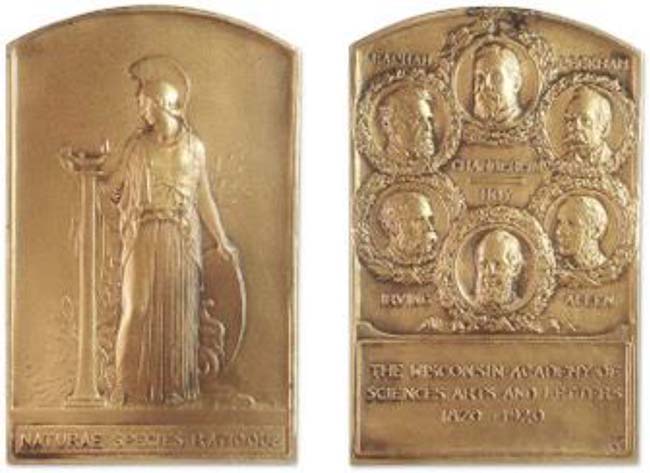
The plaquette, struck in bronze, measures 2.9 inches by 1.9 inches. It weighs 88 grams (3.1 oz.). The bottom edge is stamped Medallic Art Co. NY. The right edge is stamped 20-3 (the third project by MACO in 1920). The initials on the reverse, LC, are those of Leonard Crunelle a sculptor in Chicago.
The six Wisconsin men pictured and listed on the reverse were distinguished scientists whom people would immediately recognize by only their last names. They were chosen partly for their intellectual eminence and also for their services to the Academy. I recognized only two at the top, Lapham and Peckham, both from Milwaukee, Wis. Here is a list with a brief description of each.
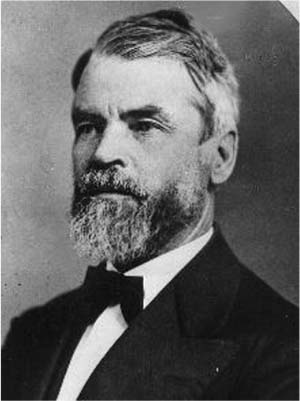 |
Increase Allen Lapham - (Milwaukee) 1836-1875. He was a surveyor, botanist, naturalist, geologist, meteorologist, state geologist, collector and cataloguer of plant and fossils, charter member of the academy. | |
| Thomas Chrowder Chamberlin (Beloit) 1843-1926. He was a geologist, professor at Beloit College, director of the Wisconsin Geological survey and president of UW-Madison, 1887-1892, Professor at University of Chicago, professor of the academy 18841887, charter member of the academy. |  |
|
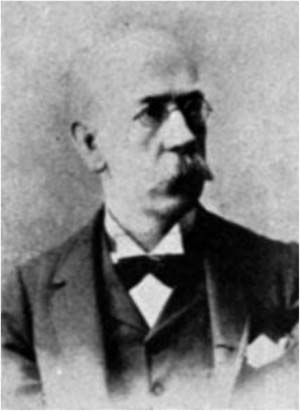 |
George Williams Peckham (Milwaukee) 1845-1914. He was a zoologist, teacher, high school principal and superintendent of schools in Milwaukee, 1873-1896 and an authority on classifications of insects. In 1897 he became the director of the Milwaukee Public Library, president of the academy 1890-1893. | |
| Roland Duer Irving (Madison) 1830-1889. He was Wisconsin's first true geologist, president of the academy, important member of the Wisconsin and U.S. Geological surveys and authority on the geology of Lake Superior. |
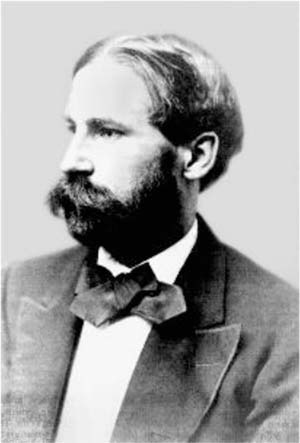 |
|
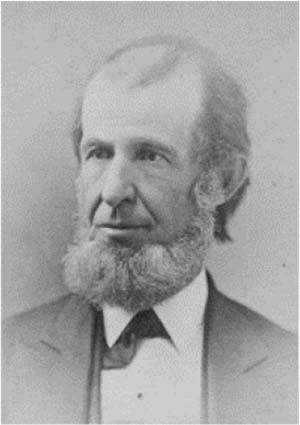 |
Philo Romayne Hoy (Racine) 1816-1892. He was a physician, naturalist, ardent student of bird life and the biology of Lake Michigan, charter member of the acade my and president of the academy 1875-1878. | |
| William Francis Allen (Madison) 1830-1889. He was a historian, professor of Latin and History at the university and a great teacher and scholar. He was the editor of the first book of American slave songs. | 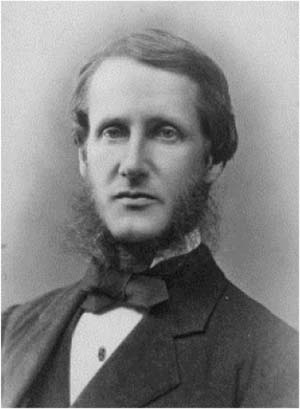 |
|
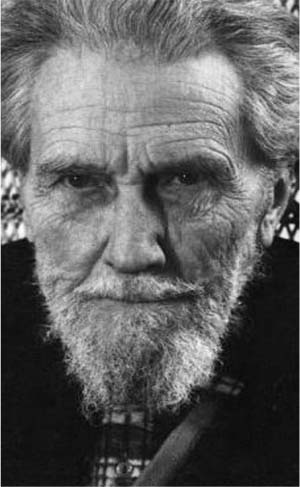 |
Sculptor Leonard Crunelle (1872-1944) was born in Lens, France in a coal-miner family and immigrated to the United States with his family as a young man. He was especially known for his sculptures of children and used his own four children as models. Near Decatur, Illinois, he worked in the coal mines carving figures from coal. He moved to Chicago where he was an apprentice to the sculptors decorating the 1893 World’s Fair Horticultural Exhibit. In addition to this plaquette, he sculpted six medals and a watch fob between 1910 and 1931. | |
| The northern Illinois town of Freeport hosted the second and most famous of the seven Lincoln-Douglas debates on August 27, 1858. It was in Freeport that Crunelle designed and created the bronze sculpture, “Lincoln the Debater”. It was dedicated on August 27, 1929 and is located in Taylor Park. Numismatists may also be interested in the statue of Sakakawea which he produced and is on display at the National Statutory Hall in the U.S. Capitol Building. Three different Abraham Lincoln statues were created by him in Springfield, Freeport and Dixon, Illinois. He created many more sculptures and monuments during his life and became an acclaimed sculptor. | 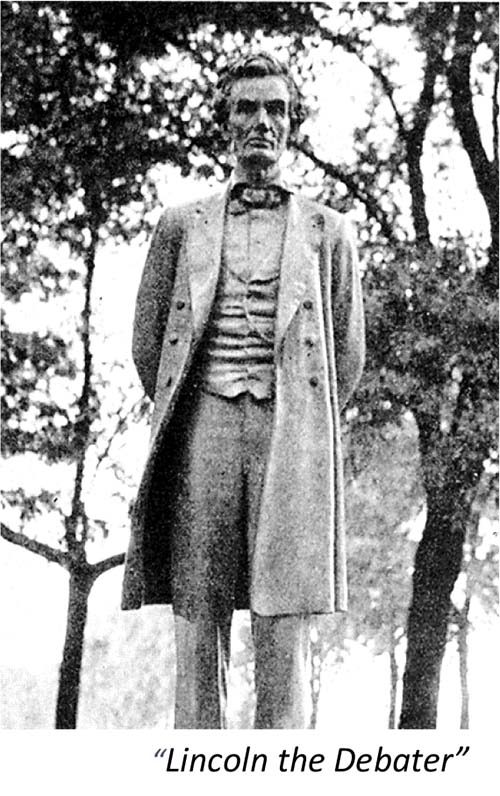 |
|
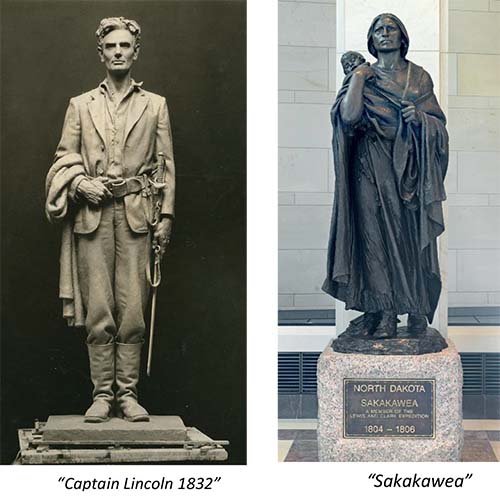
Above, another statue of Lincoln
and the Sakakawea statue by
talented sculptor Leonard Crunelle.
Below, the plaquette of the
Wisconsin scientific sextet, 1920.
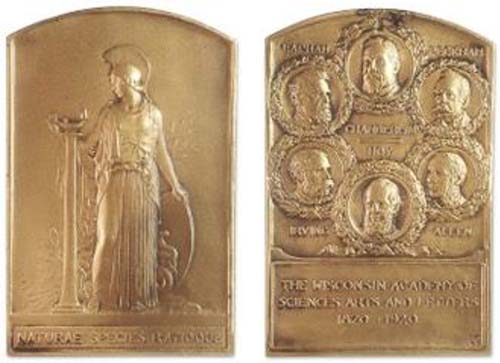
This plaquette was placed in a ten-day eBay auction on October 20, 2021 with a starting bid of $1. The bids increased until it closed on 10-30-21 with the top bid of $69.00. The consignor of this piece was the American Numismatic Society. They are deaccessioning some of their duplicate pieces similar to the practice of the ANA. They are continuing to list items. You can follow them using their eBay name of American-Numismatic-Society.
If you want to learn more about the ANS? acquisition of MACO's archives you can go to their website, http://numismatics.org/maco
I would like to say that this medal holds a prominent place in my collection. Unfortunately, I was an underbidder in the auction. But I wanted to share this interesting story with my fellow collectors. This rare medal is an exquisite piece of art as well as a numismatic treasure.
Have an interesting numismatic topic you’d like to share with your fellow NOW members?
Send your article to evan.pretzer@protonmail.com today!!!